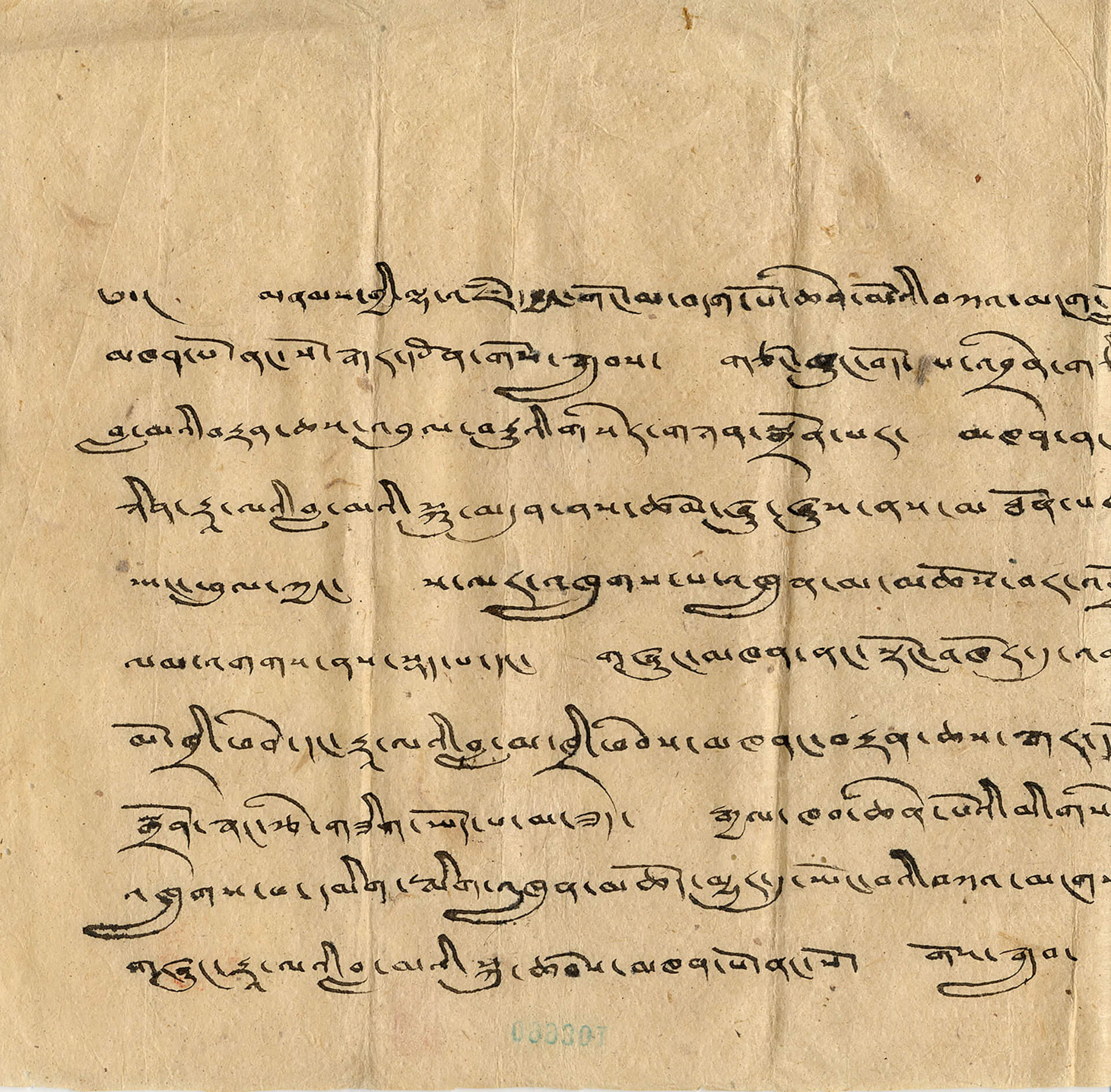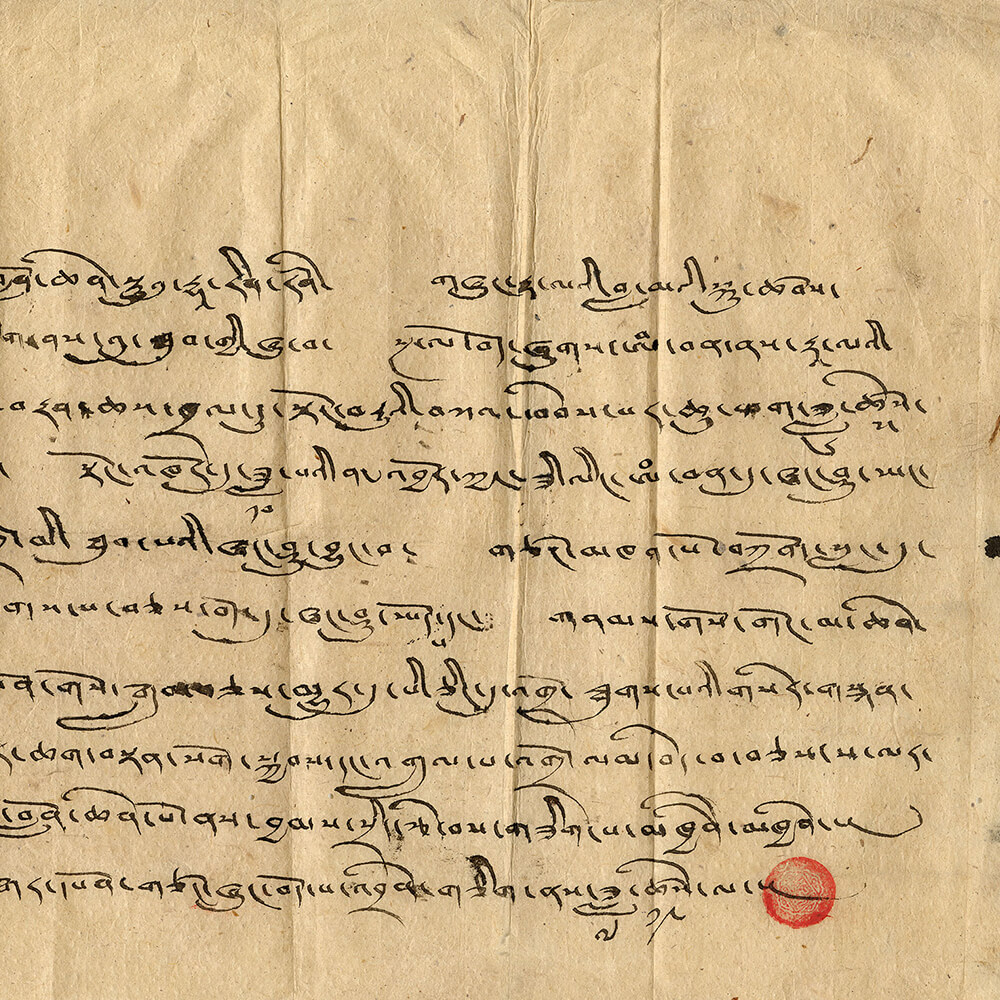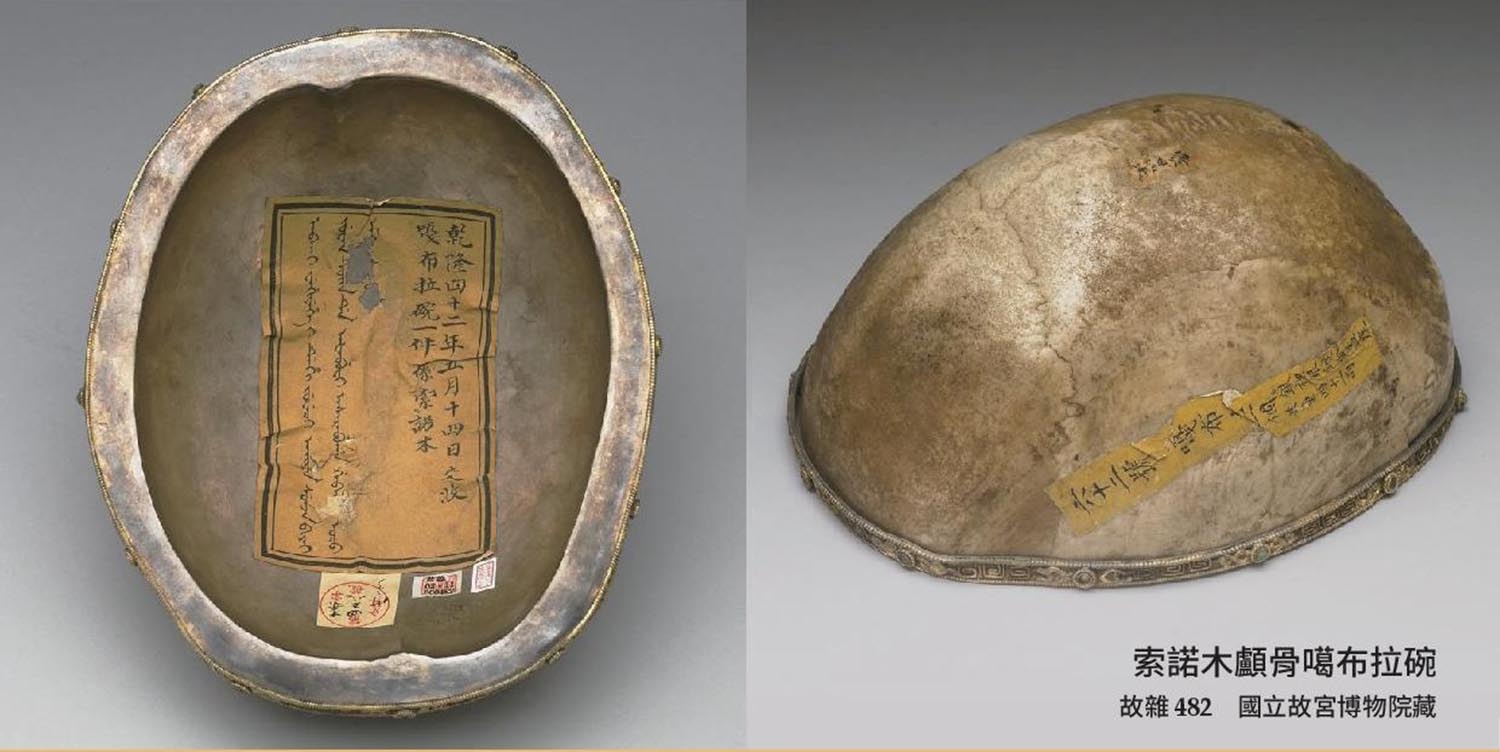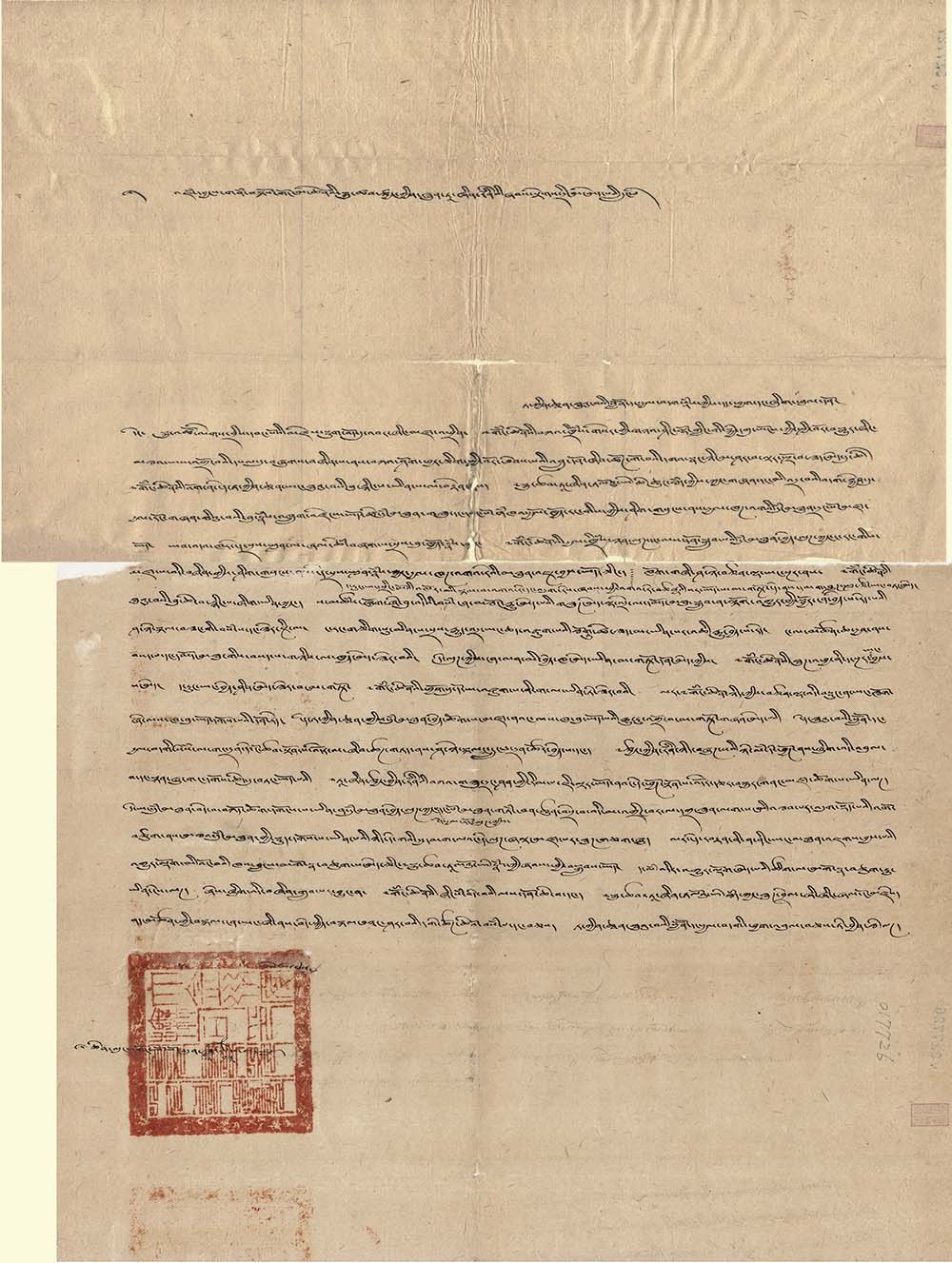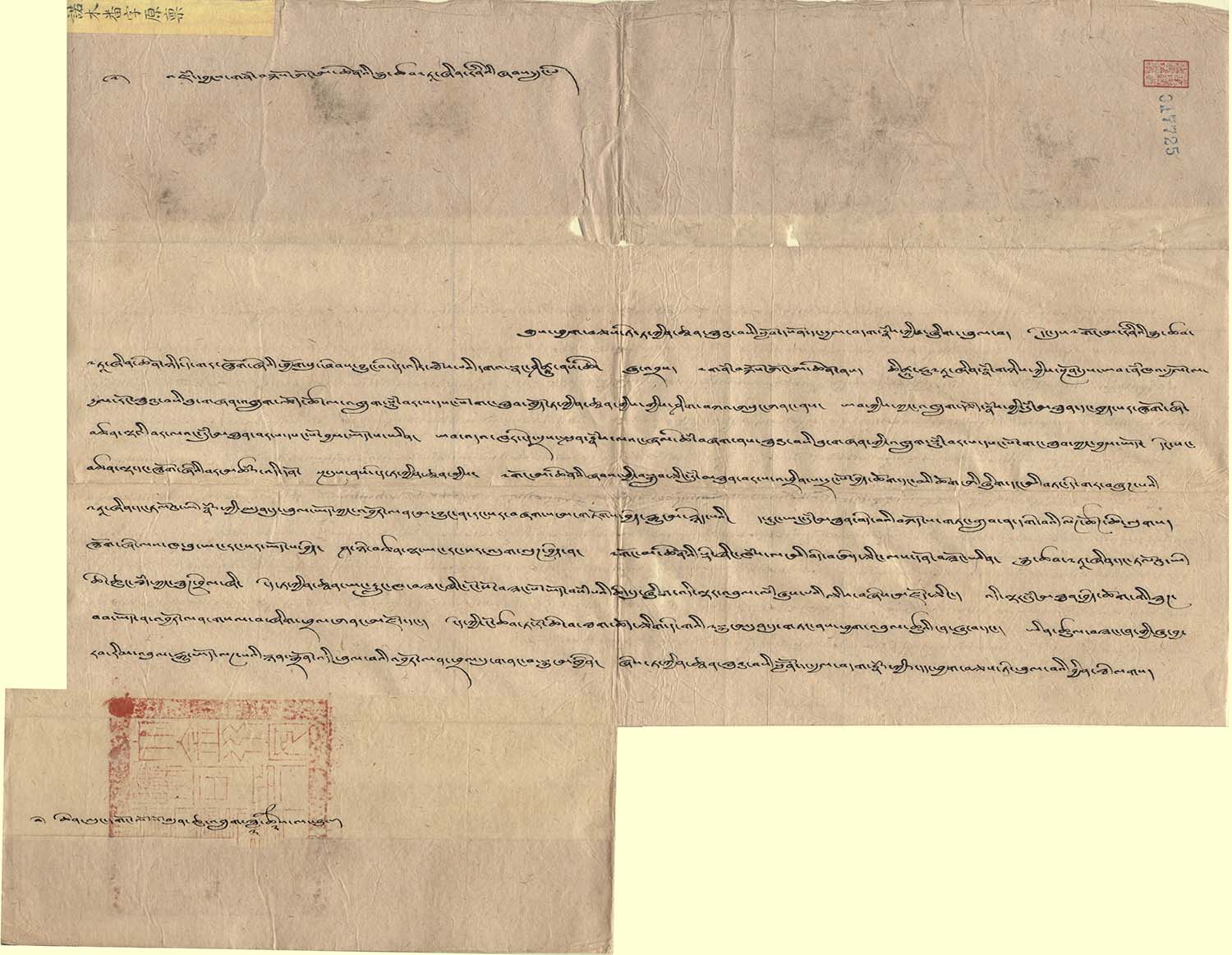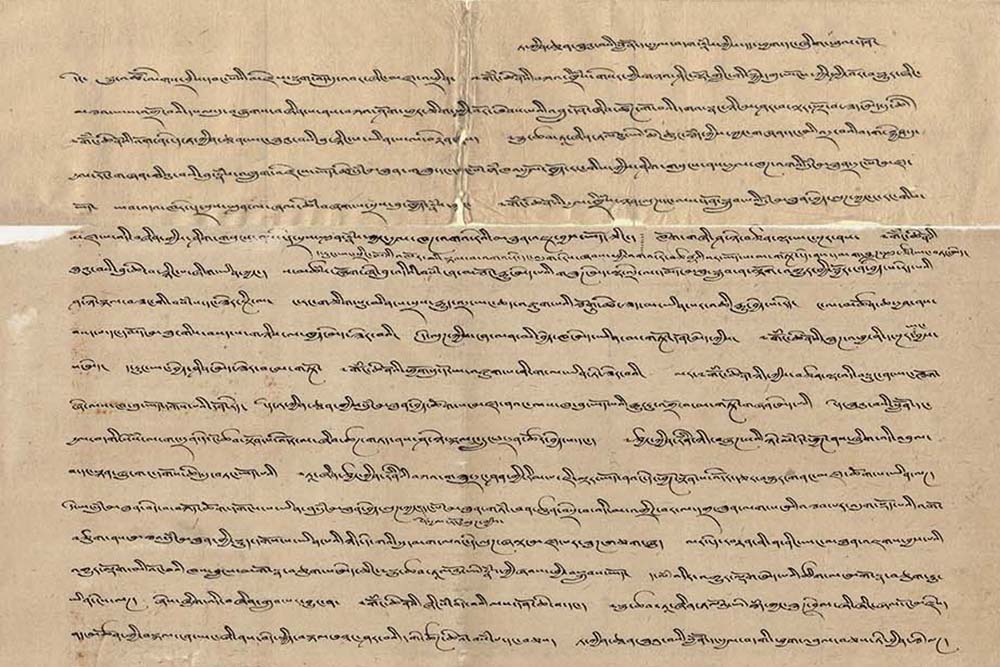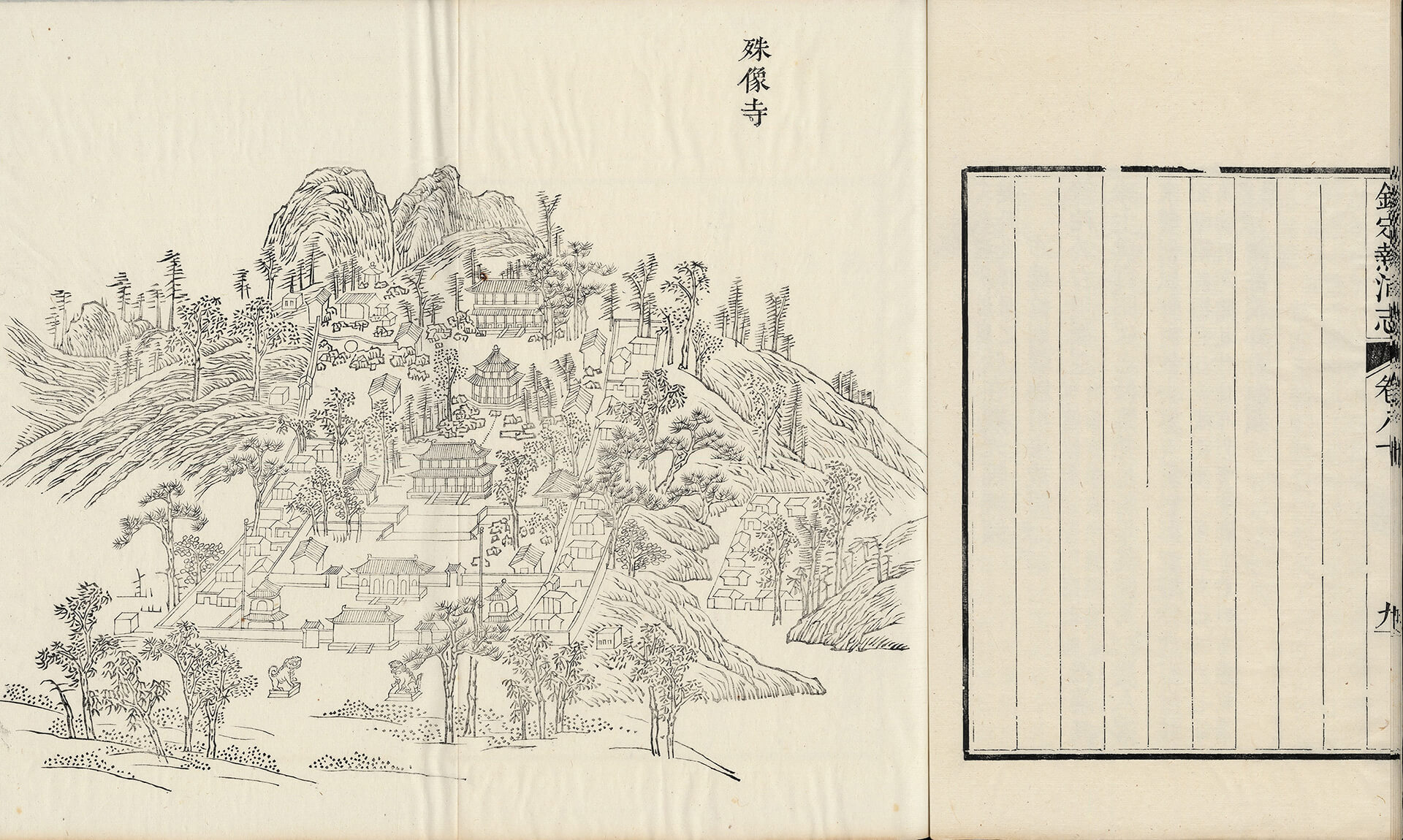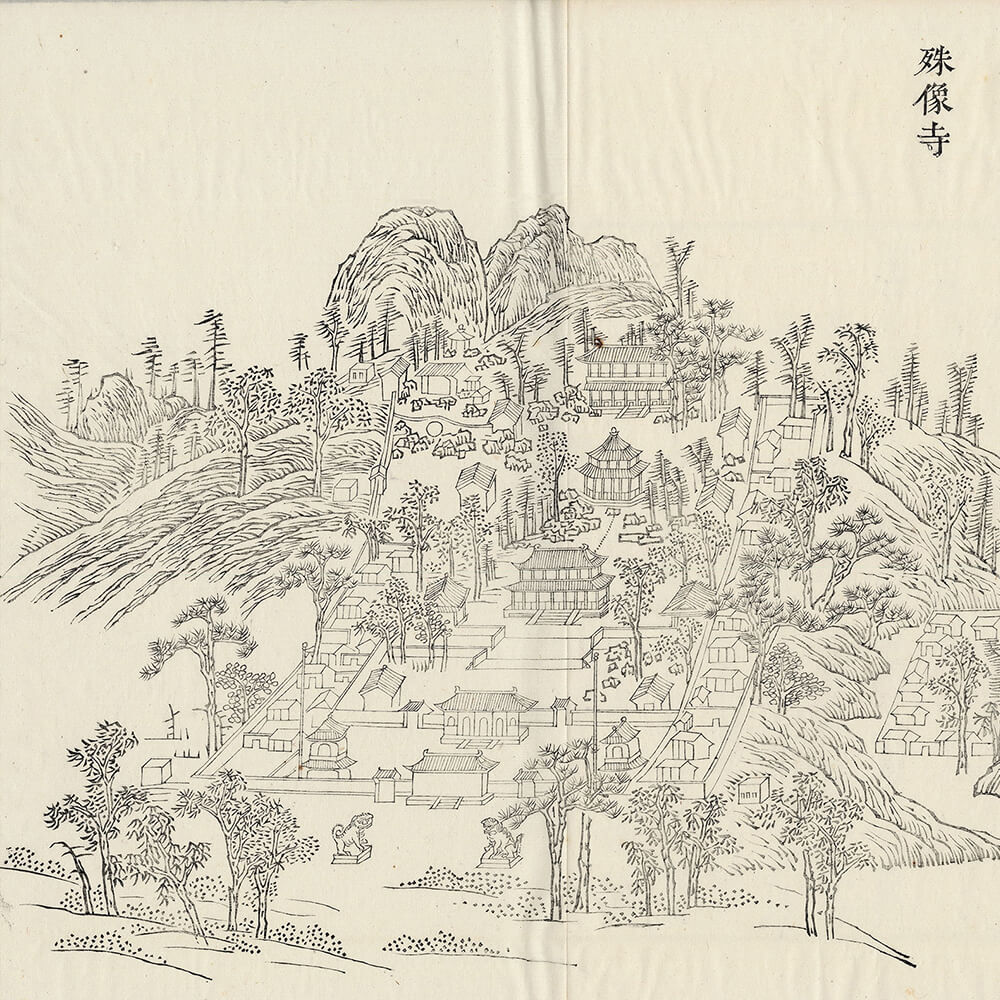The Ruler's Multiple Identities
The Chengde Summer Resort was an important venue where Qing emperors handled ethnic affairs. The Manchu rulers assumed different identities in relation to the different ethnic groups under their governance, sometimes calling themselves "emperor" (hūwangdi) or "Son of Heaven" (abkai jui), other times referring to themselves as "prince" or "khan" (han). Meanwhile, as the head of the Eight Banners (Baqi), the Qing emperor was referred to as ejen by Manchu officials in court memorials. In addition to these monikers, they were also known as "the Emperor Manjusri" (jam yang gongma), a courtesy title used in letters from the Tibetan clergy since the time of Shunzi, the first Qing emperor to rule over China proper. The Qianlong Emperor (r. 1736-1795) even saw himself as the manifestation of Manjusri, and a series of portraits depicting him as the Bodhisattva of Wisdom further strengthened the image he desired to project.
The Manjushri Emperor, a Believer of Tibetan Buddhism
During Emperor Shunzhi's reign, "Manjushri emperor" was commonly used by Tibetans as the opening words when addressing to the Qing court because they viewed the emperor as the reincarnation of Manjushri. This showed that Tibet approved of the emperor's political power and incorporated the Qing dynasty into its religious/political world.
Letter from Dalai Lama's representative Khenpo Nungso to the Imperial Commissioner appointed by Emperor Jiaqing
- 20th day of the 7th month of the 9th year of the Jiaqing reign (August 24, 1804, or, 19th day of the 7th month of the bingchen year in Tibetan calendar), Qing dynasty
The "Letter from Dalai Lama's representative Khenpo Nungso to the Imperial Commissioner appointed by Emperor Jiaqing" talks about the meeting between the Qing minister in Tibet and Dalai Lama. The letter opens by referring to Emperor Jiaqing as "Manjushri emperor."
Correspondence to the Imperial Commissioner appointed by Emperor Qianlong
- Presented by the headmen, preceptor of state, and ruler of the Chiefdom of Chuchen
- 2nd day of the 2nd month of the 37th year of the Qianlong reign (March 05, 1772), Qing dynasty
These two correspondences were two Tibetan letters submitted by a headman and his king to the imperial commissioner of Emperor Qianlong in 1772. According to Tibetan customs at the time, Qing emperors were called "Manjusri emperors" (jam dbyangs gnam bskos gong ma chen po) in writing. Although these two correspondences were not signed, they were most likely to have been sent by headman bsod nams phun tshogs. In 1771, the Jinchuan campaigns took place, and the Qing government pacified the rebels in five years. In 1776, bsod nams phun tshogs surrendered and was beheaded in Beijing. His head was made into a kapala bowl.
Poem on the inauguration of the Shuxiangsi Monastery
- From fascicle 80 of Qinding Jehol Zhi (Imperially Endorsed Local Gazetteer of Jehol)
- Compiled by He Shen, et al., on imperial order
- Imprint by the Imperial Printing Office at Wuyingdian Hall, 46th year of the Qianlong reign (1781), Qing dynasty
Rumor has it that the Shuxiangsi Monastery, located at the piedmont of Mount Wutai, was where Manjushri manifested Itself. Later, Emperor Qianlong built a temple of the same name at the Summer Resort. The halls and the building slightly resembled those of the Shuxiangsi Monastery in Mount Wutai.
Ascending to Dailuoding on Mount Wutai
- From fascicle 86 of Yuzhi Ziyushi (Collection of Imperial Poetic Works Composed in Spare Time)
- Court manuscript in black-lined columns, Qianlong regin (1736-1795), Qing dynasty
Inspired by the Shuxiangsi Monastery in Mount Wutai, Shanxi, Emperor Qianlong built a temple of the same name at the Summer Resort. The two buildings resembled each other and both worshipped a statue of Manjushri riding a suanni. The two temples in Shanxi and Jehol demonstrate Qing dynasty emperors' efforts to promote Manjushri and to create the image of a "Manjushri emperor" as advocated by Dalai Lama and Panchen Lama. The goal was to elevate the effects of Tibetan Buddhism on Manchus, Mongolians, and Tibetans.
In 1786, Emperor Qianlong traveled west to visit Mount Wutai and climbed 1,080 steps to reach the top of Dailuoding (also known as Qingfengding). The temple worshipped five Manjushri, resulting in the emperor's great mood and him writing the poem "Ascending to Dailuoding on Mount Wutai." In the poem, he wrote "Have the monks in the temple worshipping the five Manjushri seen the real deal?" Although the emperor does not directly call himself "Manjushri" in the poem, it does imply the Manjushri in the temple are just statues, and that the monks should know that the person standing in front of them is the real deal.
